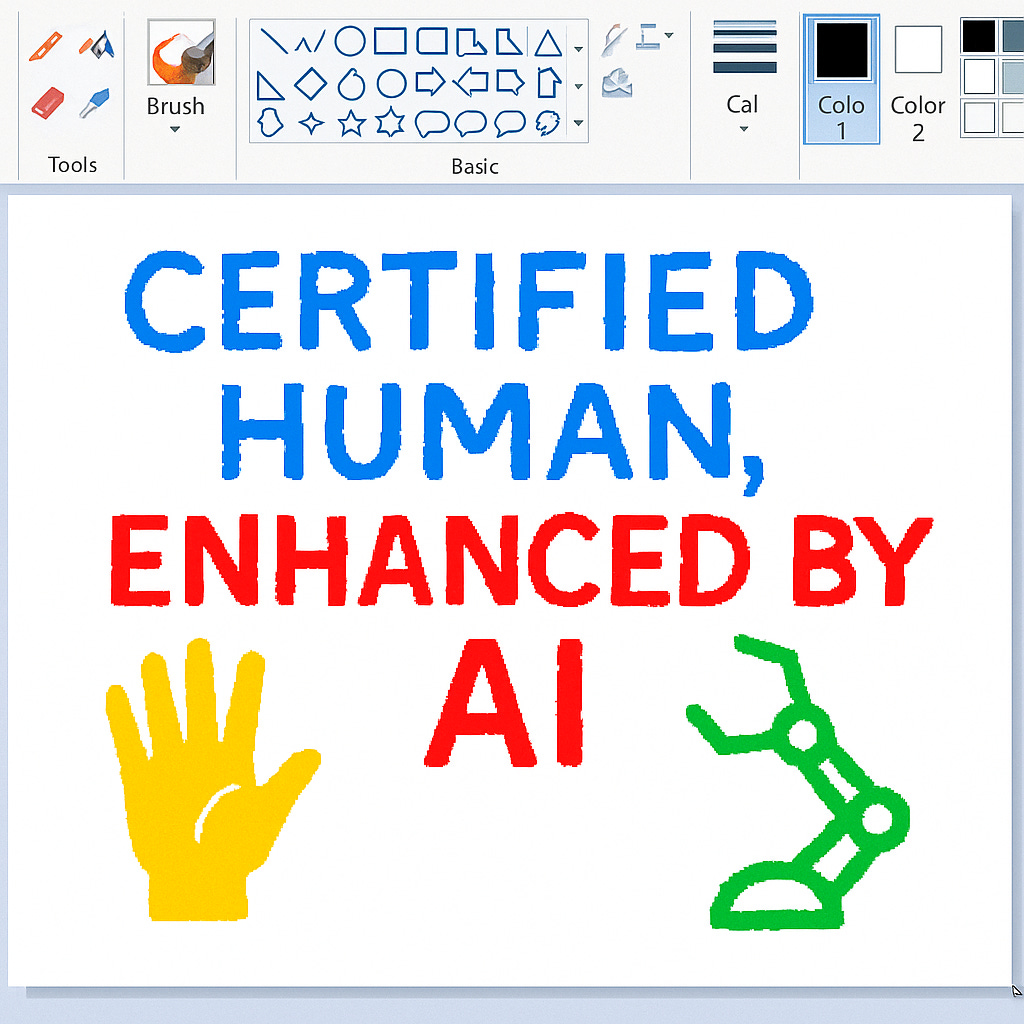Certified Human: Why it Makes Sense to Sell Your Sawdust in the Age of AI
When the proof a real life human touched the work becomes your companies most valuable feature.
Last summer, Etsy, the online marketplace for ‘handmade’ goods, rolled out a new set of “Creativity Standards” that makes every seller state how much human effort went into an item; Hand-made, Designed (by you, may include AI), or just Sourced. On the very next earnings call, CEO Josh Silverman told investors the goal was to keep “commerce human,” and noted the marketplace had already yanked four-times more listings that violated its Handmade policy than the year before.
Josh and his team were onto something here.
The Economics of Proof
In a world where a super-basic prompt in ChatGPT can spin up a month’s worth of product photos on AI-generated backdrops or draft a full press release in your brand voice - differentiation has never been more sought after as buyers are willing to open their wallets for reassurance.
PwC’s 2024 Voice of the Consumer survey shows that shoppers will pay almost 10% more for products bearing a verifiable sustainability or authenticity mark. Meanwhile, the market for AI-detection tools (the software that helps brands prove what is and isn’t machine-made) was valued at $426 million in 2023 and is projected to surpass $2 billion by 2031 (Market Research Intellect, June 2025).
Trust, in short, has escalated dramatically from nice-to-have to an explicit cost of goods sold, and a potent source of brand differentiation.
Digital Watermarks Are Becoming Default
Proof doesn’t stop with copy and text. Adobe’s Content Authenticity Initiative (CAI), the group behind the open C2PA provenance standard (Coalition for Content Provenance and Authenticity), passed 4,000 member organisations in November 2024. And YouTube are already trialing a “Captured with a camera” badge that appears automatically when a video’s C2PA metadata checks out.
These aren’t gimmicks; they’re fast becoming power plays by creators and business owners who want their audience to believe what they’re selling.
These new statements of proof sit against a fairly bleak backdrop; only 42% of customers trust businesses to use AI ethically - down sharply from 58% a year earlier, according to Salesforce’s latest State of the AI-Connected Customer report.
What This Means for SMEs
You don’t need to cancel your ChatGPT subscription just yet, or even dust off Microsoft Paint. Instead, consider becoming “Certified Human, Enhanced by AI” and say so loudly! Here’s how:
Make friction visible: Get on YouTube and share a timestamped screen-recording of your drafting session or livestream the lathe as you turn table legs; the glimpse of effort is now part of the product.
Adopt open standards early: Embed C2PA credentials in every image, PDF, or video instead of relying on your own “trust” badges that may not land with customers.
Highlight the human touch: Identify the specific moments in your value chain or customer journey where human judgment, taste, or ethical responsibility can’t be delegated to software - then spotlight those checkpoints for your customers and show where your expert judgment and skill, not software, steers the work.
Sell your sawdust: If you manufacture, film the cut-offs piling up and bundle that clip with the finished piece. If you provide a service, share annotated call summaries or behind-the-scenes screenshots that show your reasoning path. Steven Bartlett (of Diary of a CEO podcast fame) does this superbly with his YouTube channel, Behind the Diary.
Offer third-party verification for high-stakes moments: Services like AI-content audits or provenance certificates cost extra, but the seal lets you charge premium rates where trust becomes your USP.
The Quiet Shift in Value
We used to marvel when software could mimic a person. In 2025 the more interesting story is how much we’ll pay to prove a person was ever in the loop. The next time you spot a Certified Human badge, remember: that when made by a human, it may be the most valuable feature you have.
(Full disclosure. I wrote this blog first in good old MS Word, then used a bit of ChatGPT and Claude magic to get rid of my typos and keep my self diagnosed dyslexia at arms reach. Then I had a final run through. Turns out writing more than a two sentence prompt is actually quite challenging!
What’s your take? I’m always interested to know how you’re dealing with this where you work.




